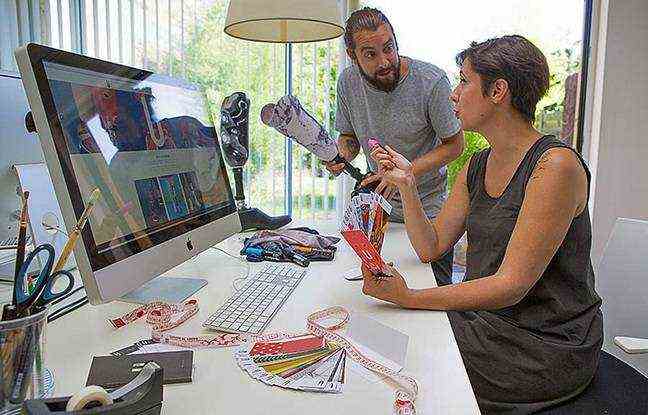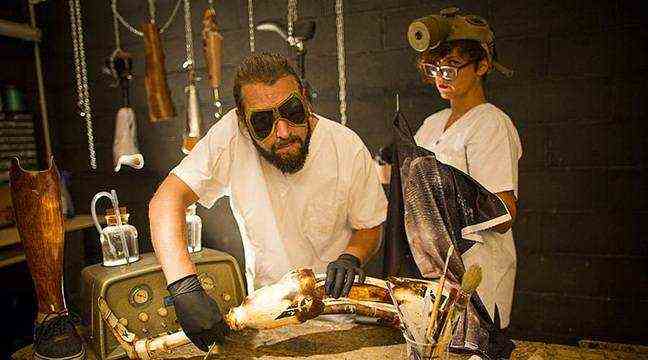Artificial limb tattoo artist. For people who have lost a limb, the replacement prosthesis is above all a utility device. It wasn’t that long ago that aesthetics didn’t matter as long as these man-made extensions got the job done. This is no longer the case today, to such an extent that the personalization of prostheses even enters the acceptance process. This is the credo of the company U-Exist, based in Roubaix, near Lille.
Founded in 2014, U-Exist defines itself as an orthopedic design studio. Its founder, Simon Colin, is an orthoprosthetist by training. “At the end of my studies, I wrote a dissertation on the personalization of orthopedic devices. I was able to observe the impact that this could have on the psychology of the person but also on the outside look “, explains the entrepreneur. That was in 2008. In the process, he set up “Custoprothétik”, an artists’ collective, then, in 2014, his company, U-Exist.
“We can work like tattoo artists do”
The beginnings were quite difficult, the approach had to be accepted. “Over the years, disability is less and less marginalized and even valued with the Paralympic Games. We are surfing on this trend to allow patients to have access to personalization, ”continues Simon Colin. It was a fight for U-Exist since the last word fell to orthoprosthetists: “They are the ones who offer personalization to patients, who bear the additional cost and who include this in the manufacturing process”, he insists.
In its catalog, U-Exist has more than 350 different patterns. Like a fashion accessory, the patient chooses a pattern that matches his style, his wardrobe or goes for tailor-made customization. “We can work as tattoo artists do, with designs created specifically for one person and which will never be reused.” This type of service will however be the responsibility of the patient with prices ranging between 100 and 1,500 euros.
The prosthesis becomes a surface of expression
This process of personalizing prostheses and orthotics, increasingly in vogue, shows an evolution of mentalities according to Simon Colin: “We take responsibility, we assert ourselves and we show ourselves more easily. It also helps to untie the languages on disability in the patient environment. People ask questions whereas before, they didn’t dare ”.

The prosthesis becomes a surface of expression which all generations seize upon. In the early years of its activity, U-Existe mainly worked for women, children and teenagers. Today, there is no longer any distinction, including for the elderly who have always worn conventional prostheses. “The day we offer them that, instantly, they are a little surprised. And they finally remind us by explaining that they find it terribly logical ”, assures Simon Colin.

